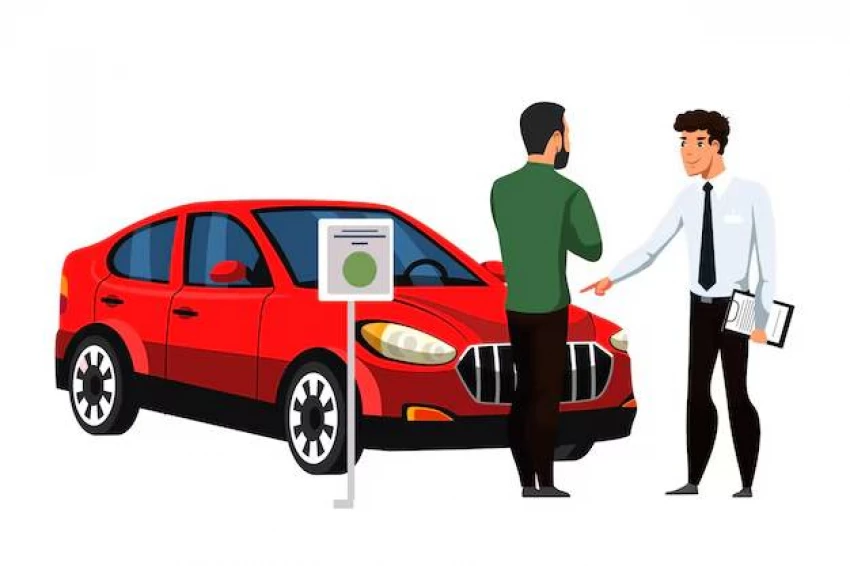

Consistent regional price gaps appear whenever we compare salvage auctions across states. Two vehicles with identical damage histories can sell for very different amounts simply because of where they’re located. These price discrepancies arise from a mix of local demand, export access, title laws, and repair economics. Understanding these geographic dynamics helps buyers avoid inflated markets and identify cost-efficient sources of salvage vehicles for sale and damaged cars for sale.
The scale of difference can be striking. A compact SUV that sells for $8,000 in California might fetch just $6,000 in Arkansas. A half-ton pickup that struggles for bids in the Northeast may sell above book value in Texas. Regional trends repeat year after year, forming a map of opportunity for those who analyze rather than assume.
Proximity to ports consistently drives auction premiums. States like California, Texas, Florida, Georgia, and New Jersey host major export terminals where containers depart daily for global markets. Buyers near these hubs bid aggressively because shipping costs are low and export processing is straightforward.
International buyers focus on mechanical soundness, not cosmetic condition. Vehicles that fail U.S. safety inspections can still find new life in developing markets with less stringent regulations. This external demand inflates coastal auction prices, particularly for trucks, SUVs, and vans that command strong resale abroad.
The result is clear: the same wrecked cars for sale listed inland will often close higher near port cities. Domestic rebuilders face tighter margins in these coastal regions and often shift their sourcing inland to remain competitive.

Local title and inspection rules strongly influence bidding confidence. States that streamline the rebuilding process—issuing rebuilt titles after a single inspection—encourage active local repair industries. Buyers in these states bid more freely on accident-damaged cars for sale because paperwork and registration hurdles remain predictable.
Stricter states suppress local pricing. When laws require multiple inspections, detailed receipts, or law-enforcement VIN verification, the added effort reduces enthusiasm and pushes prices downward. For instance, a totaled car for sale in Arizona may find eager bidders; the same vehicle in New York might stagnate for weeks.
Cross-state transactions compound complexity. A buyer acquiring a vehicle in Florida but planning to register it in Pennsylvania must meet Pennsylvania’s stricter standards. Failing to account for these differences erodes profit margins and causes delays once repairs finish.
Urban centers generate the bulk of damaged cars for sale simply because dense populations mean more collisions. Larger volumes should, in theory, reduce prices. Yet, strong competition among dealers, recyclers, and repair shops keeps values stable or even elevated.
Rural auctions, by contrast, host fewer bidders and can present opportunities for lower-cost acquisitions. Limited buyer presence sometimes allows repairable units to sell below typical thresholds. However, these regions also tend to offer older, higher-mileage inventory, which lowers resale potential.
Transport costs widen the gap further. Moving vehicles from remote areas adds hundreds of dollars per unit, so buyers bid conservatively to protect margins. Over time, this creates a pattern: prices in smaller markets stay slightly depressed compared to those in metropolitan regions.
Demand patterns align with geography. Pickup trucks dominate southern and western states, where agriculture and construction industries absorb them readily. Convertibles and sporty coupes fare best in warm climates with year-round driving weather. All-wheel-drive vehicles and SUVs hold premiums across northern states that deal with snow and ice.
These cultural and climate-based preferences directly shape auction outcomes. A totaled car for sale that appeals in Texas may draw little attention in New England, while a compact hybrid that sells briskly on the West Coast may languish in mountain states.
Rust-free vehicles from southern regions command premiums in the Midwest and Northeast, where corrosion shortens service life. Buyers willing to transport units across these regional divides often capitalize on arbitrage, acquiring cheap damaged cars in one state and reselling them where condition scarcity lifts value.
Brand loyalty also varies. Domestic trucks and SUVs dominate in much of the South and Midwest, Japanese sedans hold coastal loyalty, and European luxury cars cluster in urban and affluent suburbs. Knowing these preferences allows bidders to focus efforts where local enthusiasm supports resale strength.
Major weather events create short-term distortions in both supply and price. Hurricanes push thousands of flood-damaged vehicles into auctions within weeks, briefly overwhelming demand. During these surges, even clean-title trade-ins may experience temporary price dips as buyers focus on disaster inventory.
Hailstorms produce similar effects but with more repairable outcomes. Texas, Colorado, and Oklahoma regularly see spikes of vehicles with cosmetic roof and hood dents but otherwise intact drivetrains. Because local shops can only process so many units at once, out-of-state buyers gain an advantage by purchasing during these gluts.
Flood-related stigma persists longer. Units originating from Louisiana, Florida, or other coastal flood zones face automatic buyer skepticism. Even if the actual water exposure was minor, their state of origin lowers bids compared to identical vehicles elsewhere. Skilled evaluators who can distinguish surface rust from real electrical damage often profit from these perception gaps.
Labor and facility costs vary dramatically between states. A body shop in Los Angeles or New York operates with higher overhead than one in Mississippi or Iowa. These differences shape what qualifies as a repairable vehicle.
A sedan with $10,000 in repair needs may be viable in a low-cost region but considered uneconomical in a high-cost one. Buyers adjust bids accordingly: those planning to rebuild in expensive markets must secure deeper discounts at auction. Conversely, rebuilders in lower-cost areas can profitably tackle projects that others avoid.
Parts access compounds this variation. Large metro regions maintain dense networks of suppliers and salvage yards, cutting sourcing time and transport expense. Rural rebuilders, though benefiting from lower labor costs, may face longer waits and higher shipping for critical components. Regional economics ultimately determine how aggressively local buyers pursue salvage vehicles for sale relative to their expected resale values.
Weather shapes buying cycles. Northern auctions slow during harsh winters when snow complicates transport and open-yard inspections. Reduced competition during these months can yield favorable pricing for patient buyers. Spring thaws bring renewed activity and firmer prices as road conditions improve.
Southern states maintain steadier participation year-round thanks to mild climates. That consistency smooths out volatility but limits seasonal bargains.
Tourist-driven states like Florida and Arizona see cyclical demand peaks ahead of winter influxes. Local repair shops and small dealers rebuild vehicles in advance of these surges, temporarily driving up auction prices. Strategic buyers avoid those seasonal highs, preferring off-season months when competition relaxes.
Transport is often the hidden variable that erases theoretical profit. Moving a vehicle across 1,500 miles can cost $400–$900, depending on carrier type, load timing, and vehicle size. A modest savings at purchase can evaporate under those logistics.
Before bidding, experienced buyers calculate the total landed cost: purchase price, transport, storage, and projected repair expenses. Only if that figure remains comfortably below expected resale value does the transaction make sense. Geographic arbitrage succeeds when transport costs are outweighed by regional price differences — not when it merely narrows the margin.
Buyers handling multiple vehicles per month sometimes negotiate volume rates with carriers, reducing per-unit shipping expense. This consistency can make long-distance sourcing viable where single-unit purchases would lose profitability.
Every cross-state purchase introduces administrative friction. The selling state must release the title correctly; the receiving state must accept and reissue it under local branding rules. Timelines, fees, and required documents differ everywhere.
Some combinations process smoothly — for instance, transferring a title from Georgia to Tennessee. Others, like California to New York, can take weeks and multiple verifications. Vehicles cannot legally resell until the paperwork clears, tying up capital and storage space.
Notarization adds another layer. Certain states demand notarized signatures; others do not. Overlooking such details leads to rejected paperwork, new fees, and costly delays. Checking title procedures before bidding prevents avoidable setbacks that can turn good purchases into idle inventory.
Consistent data tracking turns regional variability into an advantage. By compiling auction results across states and seasons, patterns emerge — which markets run hot, which cool off, and where specific models trade below average. Buyers who use that historical insight can target auctions offering sustainable discounts on accident-damaged cars for sale or totaled cars for sale while avoiding high-premium regions.
Price differences reflect logistics, regulation, and culture rather than random luck. Understanding these underlying forces — export proximity, repair costs, title laws, and climate — allows a measured approach to sourcing cheap damaged cars and other salvage inventory.
The salvage market isn’t uniform; it’s a geographic puzzle. Reading it correctly means treating every state line as both a boundary and an opportunity.
Be the first to post comment!